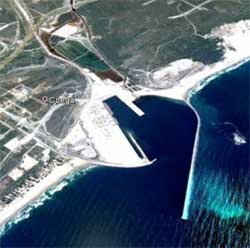
A reduced and maximum corporate tax rate of 15% is proposed for companies operating in an SEZ that qualify. These companies will also be able to make capital deductions on new buildings at a rate of 10% a year instead of the normal 5%.
Qualifying companies are those that are incorporated or effectively managed in SA and carry out selected activities in an SEZ designated by the trade and industry minister Rob Davies. The company should also generate 90% of its income from business in these zones.
"The SEZs are still being established and it's too early to assess if they will be successful, but the tax incentives have garnered significant interest," says Izak Swart, tax director for research and development and government grants at Deloitte. "The reduced tax rate will be the largest incentive available and has attracted a lot of interest," he says.
Feasibility studies are being done on SEZs in eight of the provinces for different industries. These include agro-processing in Gauteng and the Eastern Cape, renewable energy in the Western Cape, and platinum hubs in Limpopo and North West.
The proposals also allow for private investors, in collaboration with different tiers of government, to apply for an area to be demarcated as an SEZ. Swart says many municipalities have already applied for SEZ status as they recognise it as an opportunity.
The existing industrial development zones (IDZs), which generated fewer jobs than expected, will be converted to SEZs to benefit from these incentives. Only three IDZs are operational: Coega, East London and Richards Bay.
A report released last year by the department of trade and industry revealed that 40 investors with R11,8bn were attracted to the IDZs, creating 33,000 jobs, which was below expectations. The under-par performance of these zones is attributed to the incentives not being "special" enough.
"We don't want a repeat of the IDZs; they were not successful. Eventually they did turn around but this was because of initiatives by the management of the companies operating in these zones," says Swart.

The success of an SEZ depends on its ability to provide investors with a package of incentives that cannot be found elsewhere. China's SEZs were successful because its government allowed foreigners to invest in these zones and repatriate their profits. In Ireland, in some cases the government even builds factories for firms operating there.
"Reduced bureaucracy and access to ports has not been enough to attract much new investment to SA," says Antony Altbeker, research and programme director at the Centre for Development and Enterprise.
"The key question with an SEZ is whether it is special enough to induce investment that would not have happened otherwise. Plenty of places offer incredibly low and even zero tax rates. We have to look at the whole package," Altbeker says.
Other incentives proposed for the SEZs are the employment tax incentive, which gives employers a tax break for hiring new workers between the ages of 19 and 29. The employment tax incentive will be available to companies in an SEZ regardless of the worker's age. These zones will also benefit from VAT and customs tariff relief that is offered to firms in IDZs.
However, each of the 10 identified SEZs has a narrow focus on industrial activity that its companies must engage in to qualify for the tax benefits. And if the criteria are inflexible, only those companies that qualify for all the benefits would opt to be in an SEZ.
The lack of diversification means a heavy reliance on a single industry for employment, which could have a negative effect on that region in a downturn.
The SEZs have also been criticised for their lack of focus on service industries with high labour absorption, such as call centres.
Altbeker says the zones should concentrate on labour-intensive industries that can absorb a large number of low-skilled workers. "There is nothing wrong with an SEZ that tries to encourage high-end goods, but we have to consider that against SA's main problem of unemployment," he says.
He says tax incentives can never be seen as a panacea for structural impediments in the country. "If an investor has serious concerns related to matters such as the efficiency or lack of transport infrastructure, an unstable labour relations environment, and the availability and cost of electricity, no tax incentive is likely to alleviate those concerns," he adds.
Source: Financial Mail via I-Net Bridge

For more than two decades, I-Net Bridge has been one of South Africa’s preferred electronic providers of innovative solutions, data of the highest calibre, reliable platforms and excellent supporting systems. Our products include workstations, web applications and data feeds packaged with in-depth news and powerful analytical tools empowering clients to make meaningful decisions.
We pride ourselves on our wide variety of in-house skills, encompassing multiple platforms and applications. These skills enable us to not only function as a first class facility, but also design, implement and support all our client needs at a level that confirms I-Net Bridge a leader in its field.
Go to: http://www.inet.co.za